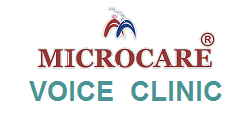Awake or Office- Based Vocal fold procedures
Awake vocal fold procedures done in Office and in OT are
1. Injection Laryngeal procedures
2. Awake Laryngeal Surgeries with or without laser.
Unique Feature of Awake Vocal folds procedures
Office based Laryngeal surgeries are done in office or in OPD with the patient completely awake. Awake laryngeal procedures done under local anaesthesia are relatively safe surgery for removal of vocal polyps and other vocal fold lesions especially in old age people with cardiac or other complications in whom general anaesthesia cannot be administered due to high risk or conditions like extreme degree of cervical spondylosis or trismus where in conventional micro laryngeal procedures endoscopy or micro instruments cannot be negotiated.
It is absolutely painless and the patient can even speak and watch his voice during the entire procedure. The procedure usually takes approximately 10 to 15 minutes and patients may leave the office soon thereafter, avoiding the recovery time that typically occurs following general anaesthesia.
A Trans Nasal Fiberoptic Laryngoscope with operational channels is passed through nose on office basis by the voice surgeon performing the surgery on moving vocal cords while the patient is speaking. Laryngeal Procedures in the Office while Awake are
- Office-Based Vocal Cord Injections
- Laryngeal Bevacizumab (Avastin) Injections
- Laryngeal Botox Injections
- Office- Based KTP Laser Treatment
Sandwitch Thyroplasty
Sandwich Thyroplasty is a novel advanced technique for simplifying the medialization of Vocal Fold with modification of thyroplasty Window and using silicone implant in Paralytic Dysphonia.
Main advantage of Sandwich thyroplasty technique is easy facilitation, fixation and stabilization of silicone implant avoiding difficult and time consuming techniques involving flanges or sutures.
Surgery for Unilateral Vocal Cord Paralysis: Correction of Vocal Cord Paralysis
How vocal cord paralysis affects us?
The voice box or larynx has three important functions
- Breathing
- Voice
- Swallowing
The vocal folds have two positions 1. Open (vocal cords are apart) for breathing and 2. Closed (together) for making sound, coughing and sealing off lungs when swallowing
When one vocal fold is paralyzed, the vocal fold usually rests in and in between position. It neither opens for breathing, nor closes for voicing, coughing, or swallowing.
The voice becomes weak and breathy. People can only say a few words per breath or frequently out-of-breath. Swallowing may be affected as well with some choking or coughing with swallowing liquids. Your cough is also frequently different and very weak.
What treatments are offered for Unilateral Vocal Cord Paralysis?
Type-I Thyroplasty with Arytenoid Adduction technique (AAT) or Medialization Laryngoplasty restores function of the larynx by moving the paralyzed vocal fold to the middle. The unparalysed side meets it in the middle for non-breathing functions and results in complete closure. The complete closure is necessary for making sound, coughing and sealing off the lungs when swallowing thus restoring most of functions.
There are two different types of medialization Laryngoplasty; injection and implantation. The injection may be done in the clinic with local anaesthesia or in the operating room under general anaesthesia. The permanent implant is done in the main operating room as day care surgery.
How effective is the treatment?
Results: 98% cases are successful at MicroCare ENT Hospital and Research Institute in restoring the speaking voice.
Surgery for Bilateral Vocal cord Paralysis
How bilateral vocal cord paralysis affects us?
Bilateral vocal cord paralysis causes husky voice, noisy breathing during sleep, breathlessness on exertion and inspiratory stridor necessitating tracheostomy (Airway Bypass).
What treatments are offered for Bilateral Vocal Cord Paralysis?
Early intervention to save life with emergency Tracheostomy (Air way Bypass) is needed in some cases.
Laser Assisted Posterior Cordotomy and Partial Medial Arytenoidectomy in many cases results in comfortable breathing with acceptable voice
How effective is the treatment?
Results: 95% cases are successful at MicroCare ENT Hospital and Research Institute in restoring the acceptable voice.
Microflap Surgery
Conventional microlaryngeal surgery for removal of vocal cord polyps and cysts involves holding the lesion and amputating at the base resulting in the loss of a certain amount of normal tissue. However the ‘Sub Epithelial Microflap Surgery Technique ” preserve as much normal tissue as possible especially preserves the functions of the layered microstructure of the vocal folds as it involves microscopic flap elevation of the upper layer and then the lesion is precisely dissected out. The upper layer, mucosal epithelium is then draped back in position.
“Microflap Surgery” technique can be used for vocal fold polyps, vocal cysts or precancerous lesions.
Sulcus Vocalis Surgery
Sulcus vocalis is an absence of the second layer of the vocal fold called Superficial Lamina Propria which leads to the formation of a gutter-like depression which hampers vibration of the vocal folds. Occasionally the third layer (Vocal ligament) may be absent.
Voice therapy may not be enough to improve voice adequately.
Sulcus Vocalis Surgery may be performed to recreate this layer. Fat is a common substance used to create an artificial lamina propria. However, surgeries for sulcus vocalis do not give a very good vocal outcome, may need multiple sessions and patients must be forewarned about this.
 Microcare Voice Clinic in Hyderabad
Microcare Voice Clinic in Hyderabad
